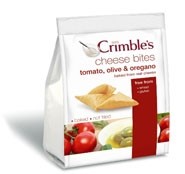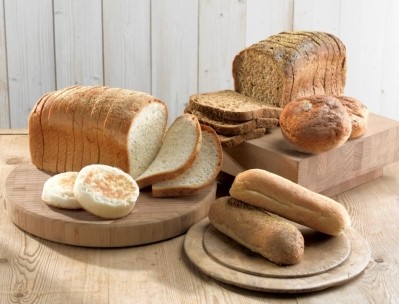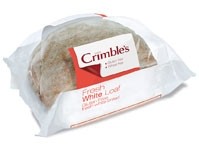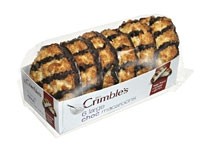Big Interview
...And by the way, they're gluten free: The rise and rise of Mrs Crimble's

“Only under sufferance, probably. Well, I don’t want people to eat my products because they can’t eat anything else. Mrs Crimble’s products are for everyone. And by the way, they are also gluten-free.”
To nail down the point, he grabs a piece of paper featuring a series of concentric circles. The inner circle – representing coeliacs – accounts for 1-2% of the population. The next circle – representing those with a wheat/gluten intolerance (perceived or otherwise) – accounts for 9-10%.
The next circle – representing those sometimes avoiding wheat – for whatever reason – accounts for 26-30%. The biggest accounts for everyone else.
So what’s his target market? The bigger the better of course, says Woods, who cut his teeth at a series of blue chip brands from Pot Noodle and Wotsits to Marmite before acquiring Stiletto Foods with Bill Mapstone in late 2002/early 2003.
At the time, Mrs Crimble’s had two ‘dynamite products’ – chocolate and plain macaroons – that are still its best-selling products. Today, the company is six to seven times as big as it was at the time of the acquisition with a 40-strong range that includes everything from brownies and cheese bites to cookies, rice cakes and stuffing mix.
“All I can say is that I don’t define my market as here” [he points to the smallest circle in the middle]. “I also don’t really recognise this data [a Kantar Worldpanel chart that describes the gluten-and wheat-free market as up 18% in the year to July 11] as it doesn’t pick up a lot of our sales, which are not just from the ‘free-from’ fixture.”
Free-from ghetto...
So do his products even belong in the free-from aisles?
Yes and no, say Woods. On the one hand, the free-from aisle has become a destination area for those on special diets. On the other hand, it is also a fixture that the rest of us routinely walk straight past without a second glance every time we go to the supermarket, he observes.
“People that sample our products at shows tell us they have never seen them in their local store, even though they have probably been stocked there for years, because they don’t visit the free-from section.”
This, he observes, is a massive missed opportunity, although things are starting to change: “In Waitrose, we’re in the main crackers and biscuits section as well as in the free-from section. In Sainsbury’s, our macaroons are in the main cake fixture, which is exactly where I want to be.”
The best, full stop
Benchmarking at Mrs Crimble’s, needless to say, is therefore done against the best mainstream products, says technical and new product development (NPD) boss Angela Mumby, who met Woods when they both worked at Lucas Ingredients in the 1980s.
“It sounds strange but I couldn’t even tell you much about what else is out there in the gluten-free market because we are just trying to come up with the best products full stop, not the best gluten free ones.
“When I’m working on new products, I’ll compare them with what I would bake at home with mainstream store cupboard ingredients, or I will buy the leading [mainstream] products and compare those.”
A slice of cardboard and a cup of tea?
Quality is also improving every day, says Woods, who is constantly exploring how far his brand could stretch into new categories without moving beyond a 10-15% price premium that could alienate punters (and supermarket buyers).
“A few years ago, some of the gluten free products out there were so bad that you might as well have eaten the packaging. Having said that, some of the private-label stuff still on the market is pretty awful.”
The rise of gluten free in the UK food retail sector has been so meteoric that it is hard to forget that supermarket free-from fixtures as we know them today have been around less than a decade, points out Woods, who has recently won a significant number of new listings at Sainsbury’s, Asda, Tesco and Morrisons for everything from cheese bites, crackers and muffins to stuffing and pancake mixes.
He is also hoping to cash in on growing interest in gluten free products from across the Pond after striking a deal with natural foods giant Whole Foods Market , while new opportunities have also opened up in Ireland, Portugal, Spain, the Netherlands and Dubai.
Speed to market
The beauty of the business model at Stiletto Foods – which develops all the Mrs Crimble’s products in-house but outsources production to a series of trusted third parties – is that it can stretch its brand into a very wide range of products without the capital costs and risks associated with manufacturing them directly, says Woods.
Crucially, however, courtesy of Mumby, it still retains the technical expertise required to develop new products in the very demanding area of gluten-free NPD, from sourcing new ingredients, flours, gums and starches to understanding how they will perform on an industrial scale.
As for new products, Mumby is now hard at work on a raft of top secret new products outside its core bakery area due to launch in the New Year, says Woods.
“You’d be amazed at how many products contain wheat flour as a cheap bulking agent. It crops up in all kinds of things, so we’re looking at a wide range of new products.”
What next for Mrs Crimble’s?
The fact that Mrs Crimble’s has been growing throughout the recession in a cake category that has been “on its knees” for much of the last 18 months is also an encouraging sign of the strength of its brand, he says.
“We’ve just launched new 12-packs of mini choc and orange macaroons in Sainsbury’s at £1.89 and they are selling like hotcakes. Buyers can see that we are bringing innovation to the category.”
So how far can the £15m Mrs Crimble’s brand be stretched?
Much further, but not into every category in store, says Woods, who introduced the first fruit smoothie and soya drink to the UK under the Mrs Crimble’s brand well before Unilever marched in with its ill-fated Adez product.
“I accept now that functional beverages was probably a step too far for the Mrs Crimble’s brand, but actually I can see it stretching from breakfast to bedtime.”














